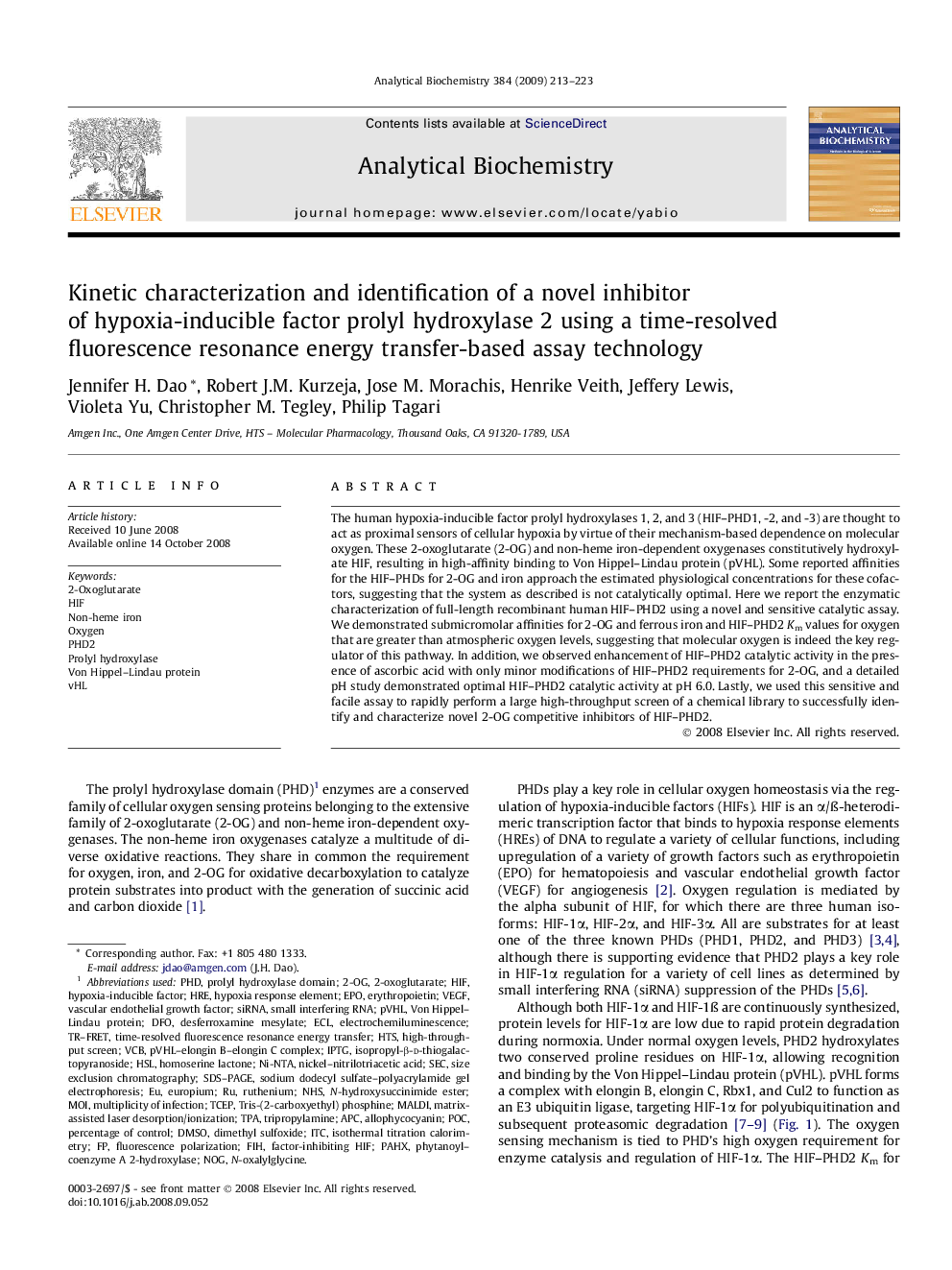| Article ID | Journal | Published Year | Pages | File Type |
|---|---|---|---|---|
| 1177119 | Analytical Biochemistry | 2009 | 11 Pages |
The human hypoxia-inducible factor prolyl hydroxylases 1, 2, and 3 (HIF–PHD1, -2, and -3) are thought to act as proximal sensors of cellular hypoxia by virtue of their mechanism-based dependence on molecular oxygen. These 2-oxoglutarate (2-OG) and non-heme iron-dependent oxygenases constitutively hydroxylate HIF, resulting in high-affinity binding to Von Hippel–Lindau protein (pVHL). Some reported affinities for the HIF–PHDs for 2-OG and iron approach the estimated physiological concentrations for these cofactors, suggesting that the system as described is not catalytically optimal. Here we report the enzymatic characterization of full-length recombinant human HIF–PHD2 using a novel and sensitive catalytic assay. We demonstrated submicromolar affinities for 2-OG and ferrous iron and HIF–PHD2 Km values for oxygen that are greater than atmospheric oxygen levels, suggesting that molecular oxygen is indeed the key regulator of this pathway. In addition, we observed enhancement of HIF–PHD2 catalytic activity in the presence of ascorbic acid with only minor modifications of HIF–PHD2 requirements for 2-OG, and a detailed pH study demonstrated optimal HIF–PHD2 catalytic activity at pH 6.0. Lastly, we used this sensitive and facile assay to rapidly perform a large high-throughput screen of a chemical library to successfully identify and characterize novel 2-OG competitive inhibitors of HIF–PHD2.
